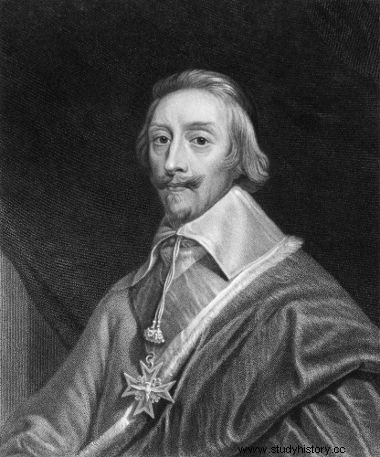
By Me. Cláudio Fernandes
With the advent of Religious Reforms in the sixteenth century, Europe entered a veritable upheaval of civil wars. In the most varied regions, from the British Isles to France and Spain, the wars for succession of thrones between aristocratic houses, thickened by religious differences, set the tone for the political, social and economic events of early modernity. At the same time, the Great Navigations and the assembly of colonial systems on the American continent took place. At the end of the 16th century and in the first half of the 17th century, the model of monarchical absolutism it came as a response to the crisis created by the religious civil wars. This model found its finest form with the Formation of the French National Monarchy .
The formation of the French Absolutist State, or the French National Monarchy, is linked to the rise of the defense of the model of absolutism in France , whose main architect was Armand Jean Du Plessis , the Cardinal Richelieu (1585-1642) . Richelieu became minister of France in 1624, appointed by the queenMarie de Medici . From then on, Richelieu began to undertake a profound reform of the French political system, hardening the executive power, stressing the doctrine of the divine origin of the king's power and rejecting the aristocrats who stood in the way of his project, including the queen.
Despite laying the foundations of the French State, Cardinal Richelieu's power went through the ordeal of the Thirty Years' War (1618-1648) . As is well known, this was a war of modern principalities and nations against the authority of the Holy Roman Empire, which sought the unity of all European thrones. The war was extremely costly for those involved and only ended with the so-called Peace of Westphalia .
France was one of the winners of the war, however, its economy was in shambles. After Richelieu's death, another minister was charged with reforming the country's economic framework, Cardinal Mazanino . However, the measures taken by Mazarino were too unpopular, such as raising taxes. These measures eventually led to popular revolt, expressed in the “Paris Fronds” , that is, popular uprisings that led to the occupation of the Royal Palace of the Louvre.
The situation of the French State only returned to stability with the rise of Louis XIV to the throne in 1661. With Louis XIV, absolutism regained its well-finished structure in France. This was the monarch who was also known asSun King . With Louis XIV, the doctrine of the divine right of kings came into full force. Its political structure was based on its group of advisers, who, over time, became governors of the provinces. The entire source of power emanated from the figure of the king.
The merchant and war navy of France became very powerful at that time, mainly because of the actions of the Minister of Finance, Colbert.
